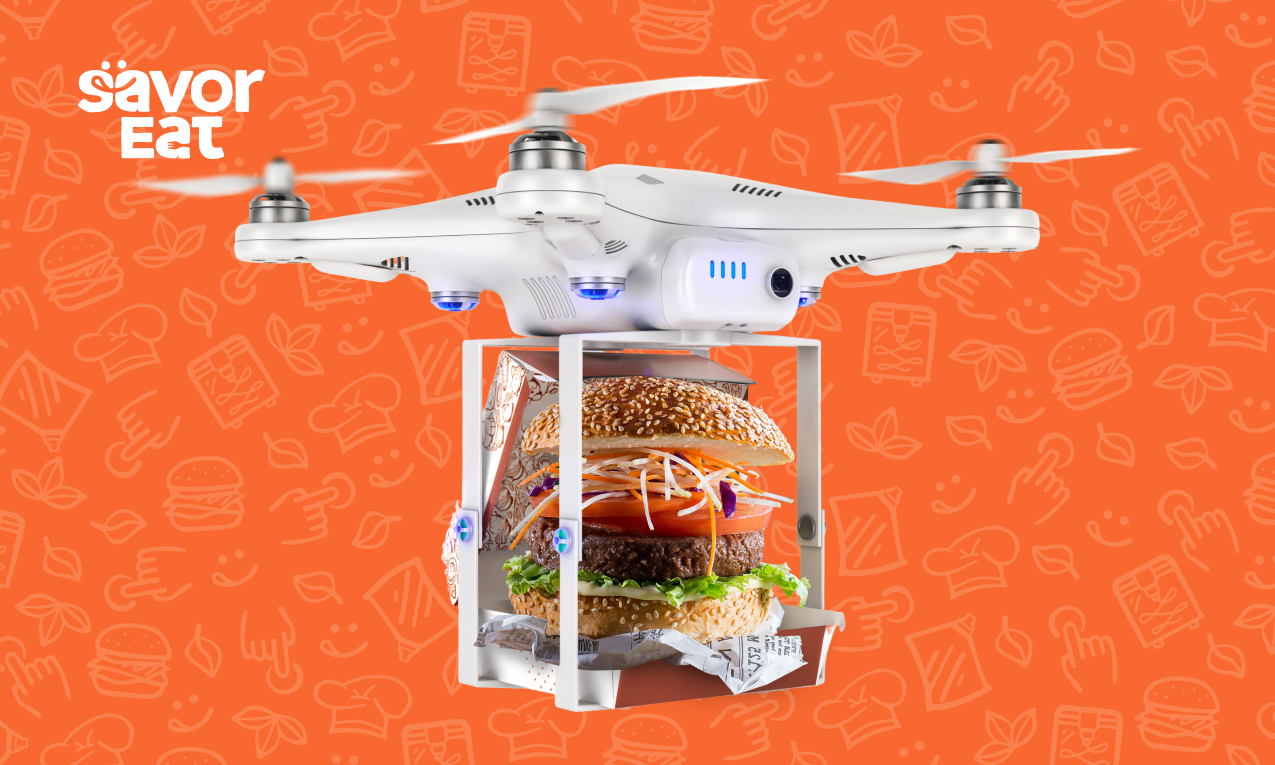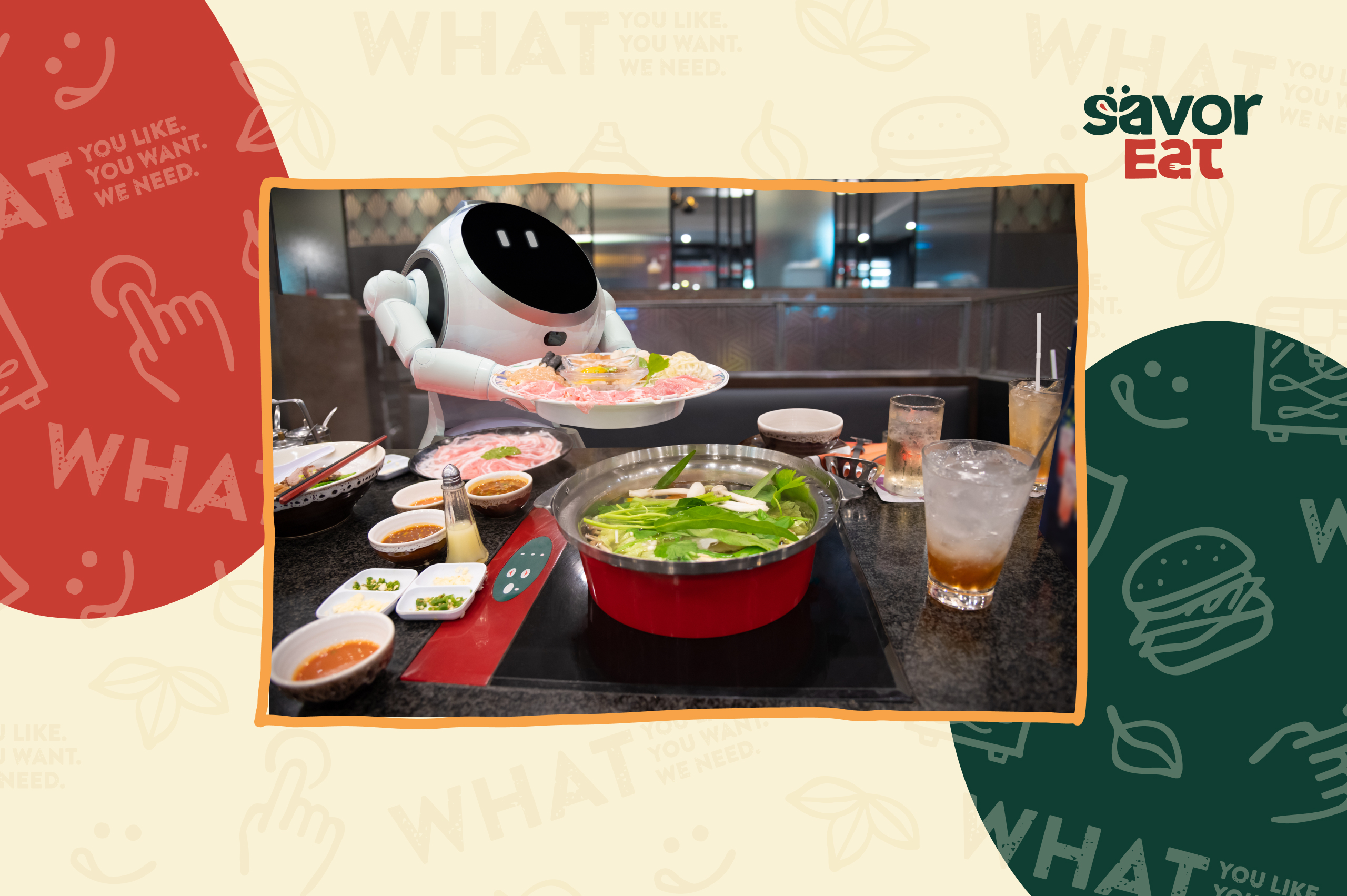Whether it is robots bussing tables or self-driving delivery robots, restaurant automation is overtaking both back-end and front-end activities in the food industry.
The global food tech market has an expected compound annual growth rate (CAGR) of 6.0% from 2019 to 2027. It is estimated to reach $342.52 billion by 2027. At the same time, the global food automation market is expected to grow to $28 billion by 2026, growing at a rate of 7%.
It is now widely accepted that automation will soon be taking over the restaurant industry, mainly for the better—machines can maximize productivity and efficiency. When your establishment provides better customer service, it retains more customers,
attracts new diners and helps build greater guest loyalty. An automated kitchen frees up your staff because the automated machine cooks the food. Staff can help operate the machines and supervise, ensuring everything is top of the line.
However, one common problem that restaurateurs are facing amidst the innovation is compensating for the loss of the human touch. After all, for decades, the food industry was run by people making and serving food to customers they interact with.
Restaurant Automation: Problems Solved and Drawbacks
Automation in the restaurant business is largely being welcomed by restaurateurs all over the world. This is due to increasing labor costs, labor shortages, high employee turnover, inflation, rising operational expenses, and falling profit margins.
With automation and robotics, there is tremendous potential to solve all of these problems. AI-powered robots and cloud-supported systems can at least partially automate repetitive tasks at maximum efficiency and with little to no error.
However, implementing restaurant automation is not a simple process. Successful implementation is a precarious balancing act, with employees and consumers showing distrust and resistance toward these developments.
Employees are concerned about losing their jobs to robots, while consumers may balk at the limited human interactions when they spend time in a restaurant. This loss may lead to unhappiness with the service, impersonal experience, and diminished satisfaction.
For restaurateurs, the introduction of automation could make customer engagement more challenging, further reducing the opportunities to build brand loyalty and giving them reasons to keep coming back.
Hence, restaurateurs’ biggest problem at the moment is how to reap the economic and practical benefits of automation without losing the traditional restaurant experience with a human touch.
Here are some strategies that can bridge this gap, helping enterprises automate their operations and come out on top without alienating their customer base.
Identifying the Need for Restaurant Automation
The key to successful implementation is thinking about the need for automation in restaurants before implementing new solutions. This will help restaurants solve their business problems and employ restaurant automation solutions that are suitable and sustainable for their unique workplace ecosystem.
Here are some things that restaurant owners considering restaurant automation should account for:
- Implementing personalization and loyalty-based programs to continue engaging customers
- Attracting customers (through the door, online, and via mobile app) with these engagement and rewards programs
- Calculating capacity and demand to make predictions like wait times, peak hour traffic, etc.
- Collecting and analyzing data to provide actionable insights for optimized sale times for certain items or services
- Creating a unified, efficient commerce experience by connecting the back office, kitchen operations, and front of the house
- Developing a working and dining experience that ensures operators and consumers alike can enjoy it to its fullest
When employed successfully, automation must improve these important elements of the foodservice industry. Technology is meant to boost efficiency and minimize waste. This means customers will spend less time standing in long queues and instead spend their time in a restaurant enjoying a delicious meal with their friends and family.
Identifying the Pain Points and Pressing Needs
The main purpose of automation is not to replace human employees. Instead, these solutions are meant to help teams work more efficiently, empowering them to focus on elevating the guest experience. Mundane and repetitive tasks can be offloaded to machines so humans can focus on the more specialized and productive ones. Restaurant robotics could indeed be leveraged to replace repetitive tasks like delivering drink orders, running orders, and bussing tables. Automation could aid hospitality/restaurant staff in improving the most important part of their job – communicating with customers to ensure excellent experiences. Rather than being tied down by all of the running around, staff are able to focus on their guests. This leads to happier customers, higher tips, and, most importantly, greater employee retention.
Therefore, considering the pressing needs of the restaurant and implementing advanced solutions to meet them, are the next crucial steps in implementing automation.
It should not be difficult to figure out the pressing needs of a certain restaurant. There are often bottlenecks in operations and inefficient systems that have been in place for years, maybe even decades.
Here are some crucial operations that may require some degree of innovation:
- Ingredient preparation
- Cooking, chopping, steaming, seasoning, etc.
- Order taking
- Serving customers
- Greeting customers
- Wait times
- Customer engagement
- Total check-in and check-out time
- Data analysis and interpretation
- Inventory management
- Tailoring fine dining experiences
- And more.
Restaurants often find themselves in bottleneck situations during peak hours or labor shortages, for various reasons. Automation can help provide relief and serve more customers.
Restaurant automation can also enable employees and managers to create meaningful experiences for customers. With the back-end tasks taken care of by restaurant robotics, employees can spend more time engaging with the people they serve, which adds value to their overall work.
For some restaurants, data analytics may be their most pressing need—this is truly the arena where AI-powered automation solutions can shine. Implementing high-tech solutions can help owners gain deeper insight into peak-hour consumer behavior, wait times, and calculate the best time to order inventory. For all of these and more, generating and analyzing data are vital steps.
Point-of-sale (POS) devices, cloud-based software, and back-office platforms—there are many touchpoints for data collection. This information can then be applied to improve the restaurant’s operational efficiency. It also eliminates the guesswork and reduces errors in back- and front-end functions.
The biggest benefit of all this data is that restaurant owners can closely monitor their business and pinpoint exactly what is and isn’t working. Gaining proximity to the guest and better translating guest analytics into improved experience and loyalty – are indeed great opportunity areas.
Having a Clear Understanding of What’s Working (And What Isn’t) in Foodservice Operations
Automation in the restaurant business gives owners access to valuable data that manual processes cannot. This data can be used to measure many different things, such as customer satisfaction from the overall experience, the average time it takes for orders to be processed and delivered, and more.
Restaurants and food service institutions can better understand and adjust their operations to improve customer satisfaction and elevate the experience. This ultimately helps restaurants deliver consistent, top-notch experiences to all their customers.
This effectively debunks the argument on the loss of human touch. With robust and accurate data collection, restaurants now have the resources necessary to make informed decisions to make customers happy.
Employees and managers can also use data to develop strategies that will boost profits and generate healthy cash flow. When they embrace automation, they can benefit from higher wages, thus reducing their feelings of resistance toward innovation.
Restaurant automation also opens up new business opportunities for food service workers to seek long-term growth in their profession. This can solve the labor loss issue across the industry while improving employee retention rates.
Some people believe that food service workers will be displaced by automation, especially those in preparation or delivery. However, the reality might be different. One 2018 report by the Center for an Urban Future, suggests that most jobs will be redefined instead of simply disappearing.
This means that most automation solutions won’t take away human jobs, but only the unpleasant or dangerous parts of their tasks. Human employees will have the opportunity to enjoy meaningful tasks that add value to their workplace and the customers that they serve.
This study is backed by labor shortages reported across the restaurant industry, a trend partially influenced by job dissatisfaction and low wages. Automation can help improve this situation— establishments can increase their savings, reduce losses, and prevent food waste. Efficient operations lead to higher profits and better working conditions. This can create an upward virtuous cycle.
Ultimately, data analytics can be used to determine which parts of restaurant operations can be made more efficient with a bit of technological investment. This is much better than leaving such an important decision entirely in the hands of one person or a group of people.
Restaurant Automation: Does it Lead to the Loss of Human Touch?
Claiming automation to be the reason behind the loss of human touch is largely incorrect. Machine-based solutions help restaurateurs and customers by allowing them to choose how much interaction they prefer.
In most cases, automation does reduce interactions between restaurant staff and consumers. But that’s not always a bad thing, especially if it leads to increased efficiency. Customers can enjoy their fresh and hot meals and spend their time talking to friends and family.
Such experiences resulting from automation in restaurant business can increase more intimate human interaction by reducing unnecessary touchpoints. Moreover, in many cases, robotics in the front-of-house, visible to guests, can be a point of attraction and could lead to added traffic and throughput.
Final Thought
Automation will soon be an inevitable and inescapable part of our lives. And no industry will remain untouched for long. This phenomenon does not have to be as bad as it’s made out to be— particularly in the food service and restaurant industry.
For now, we surmise that robots certainly won’t be causing a loss of human touch; in fact, they may even be enabling it. It will not result in job loss, but rather improve valuable work opportunities for those who are passionate about food.
Leveraging automation for resolving pain points, deploying the right solutions, and making the best use of it can turn it into a tremendous opportunity for growth instead.
Restaurant robotics and automation have the potential to resolve many issues plaguing the food service industry. Mindful implementation and a customer-centric approach will serve as keys to success.
Here are some final points to consider in the decision-making process:
- Will technology help my establishment be more human? As mentioned, and although counter-intuitive, tech in the realm of hospitality or food service, could help staff build a stronger long-term connection with guests – through smart data gathering – and at its best, empowering staff to do what they do best.
- Can it significantly boost guest experience? An Epsilon study revealed that 80% of customers prefer brands that tailor to their individual tastes (i.e. offer a personalized experience). With machine learning, the ability to provide customized experiences in a 1-to-1 world, is enhanced.
- Will it help us better address customer feedback and complaints? If tech enables greater capture and monitoring of guest feedback on an ongoing basis, the ability to further elevate guest experience becomes significantly stronger.
- Will it streamline our business operations? Your automation tech stack should surely be about bringing long-term cost and time savings that empower your business to focus on the elevated guest experience. Whether it’s helping to streamline food preparation, ingredient sourcing, order taking or any other key operational flow – it should ideally help with efficiency.
In the food service business, the guest experience is clearly paramount, and if you’re in the business of exceptional customer experience, Striking the right balance between high-tech and face-to-face that ensures long-term loyalty should never be an afterthought – rather a daily agenda-setter.








